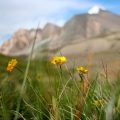Introduction to Britain’s Native Flora
Britain’s countryside is world-renowned for its lush greenery, vibrant wildflowers, and diverse woodlands. Our native plants – from bluebells carpeting ancient forests to the rugged heather on Scottish moors – shape the very character of our landscapes and gardens. These plants aren’t just beautiful; they’re an essential part of Britain’s natural heritage, supporting a wide range of wildlife and contributing to the unique charm found across England, Scotland, Wales, and Northern Ireland. Whether you’re enjoying a family picnic in a local park or strolling through a National Trust garden, native British flora surrounds us and enriches our daily lives. Understanding what makes these plants so special is the first step in appreciating the challenges they now face from invasive species and human activities.
2. What Are Invasive Species?
Invasive species are plants, animals, or microorganisms that are not native to the UK and cause harm to local ecosystems, the economy, or even human health. Unlike native species that have evolved alongside each other in balance, invasive species often have no natural predators in Britain. This allows them to spread rapidly, outcompeting native flora for resources such as light, water, and nutrients.
Common Invasive Species in British Communities
| Name | Type | Origin | Impact on Native Flora |
|---|---|---|---|
| Japanese Knotweed | Plant | East Asia | Outcompetes native plants, damages infrastructure |
| Himalayan Balsam | Plant | Himalayas | Suppresses local wildflowers along rivers and streams |
| Rhododendron ponticum | Shrub | Southeastern Europe and Asia | Crowds out native woodland plants, alters soil chemistry |
| Grey Squirrel | Mammal | North America | Competes with red squirrels, damages trees and bulbs |
| Signal Crayfish | Crustacean | North America | Digs into riverbanks, threatens native crayfish species |
How Invasive Species Spread Across the UK
The spread of invasive species across Britain often starts innocently enough—through ornamental gardening, imported goods, or accidental release from ponds and aquariums. Many people don’t realise that moving soil, garden waste, or even boats between waterways can help these species hitch a ride to new habitats. Once established, their seeds, spores, or young can travel further by wind, water currents, animals, or even muddy boots and car tyres. This makes it a community-wide issue where everyone’s actions matter in stopping the spread.
![]()
3. Human Influences on Native Plant Life
Britain’s native flora faces significant challenges not only from invasive species but also from the everyday actions of people across the country. As our towns and cities grow, and as we enjoy the countryside, it’s important to recognise how our lifestyles can impact plant life—sometimes in ways we might not expect.
Urban Development
The expansion of urban areas often leads to the loss of wild spaces where native plants once thrived. New housing estates, roads, and shopping centres can fragment habitats, making it difficult for plants to spread naturally or find suitable places to grow. Even well-intentioned gardening choices, like paving over front gardens for parking or planting non-native ornamentals, can reduce biodiversity in local neighbourhoods.
Agriculture and Land Management
Farming is an essential part of Britain’s heritage and economy, but modern agricultural practices can put pressure on native plant species. The use of pesticides and fertilisers may harm wildflowers and disrupt soil health. Large fields with single crops (monocultures) leave less room for hedgerows, meadows, and woodland edges—traditional havens for Britain’s diverse plant life. Changes in land management, such as draining wetlands or removing ancient woodlands, further threaten rare species that depend on these unique habitats.
Recreational Activities
We all love a good ramble in the countryside or a picnic in the park, but even gentle recreational activities can have an unintended impact. Well-trodden footpaths may erode delicate habitats like heathlands or chalk grasslands. Off-road cycling or horse riding might disturb ground-nesting plants or spread seeds of invasive weeds on tyres and hooves. Littering and trampling are ongoing problems in popular beauty spots, putting extra strain on already vulnerable plant communities.
Finding a Balance
While human influence is inevitable, there are many ways we can help protect Britain’s native flora. Making space for wildflowers in gardens, supporting sustainable farming methods, sticking to marked paths during walks, and taking rubbish home all add up to make a difference. By being more aware of our actions, families across the UK can play their part in safeguarding the wonderful variety of plants that call Britain home.
4. Notable Invasive Species in Britain
Britain’s countryside and green spaces are facing increasing challenges from invasive plant species that threaten native flora and disrupt local ecosystems. Two of the most notorious offenders are Japanese knotweed (Fallopia japonica) and Himalayan balsam (Impatiens glandulifera). These non-native plants have become widespread across the UK, causing significant problems for both the environment and local communities.
Japanese Knotweed: A Persistent Problem
Originally introduced as an ornamental plant in the 19th century, Japanese knotweed has become infamous for its rapid growth and resilience. Its powerful root system can penetrate concrete, tarmac, and building foundations, making it a nightmare for homeowners and developers. In natural habitats, knotweed outcompetes native plants by forming dense thickets that block sunlight and alter soil chemistry, drastically reducing biodiversity.
Himalayan Balsam: Pretty but Perilous
With its striking pink-purple flowers, Himalayan balsam may look attractive along riverbanks and wetlands, but it’s far from harmless. This species spreads quickly, especially along waterways, where it crowds out native wildflowers and destabilises riverbanks. When Himalayan balsam dies back in winter, it leaves bare soil exposed to erosion, impacting water quality and threatening aquatic life.
Key Invasive Plant Species Affecting Britain
| Species | Origin | Main Impact on Ecosystem | Control Difficulty |
|---|---|---|---|
| Japanese Knotweed | East Asia | Displaces native plants; damages infrastructure | Very High |
| Himalayan Balsam | Himalayas | Crowds out natives; causes riverbank erosion | High |
| Giant Hogweed | Caucasus region | Toxic sap; harms wildlife and people | High |
| Rhododendron ponticum | Southeast Europe & Asia Minor | Dense shade inhibits native growth; toxic to some animals | Medium-High |
The Ripple Effect on Local Communities and Wildlife
The spread of these invasive species does not just impact nature lovers or conservationists. It affects everyone—from families enjoying local parks to farmers managing their land. Native birds, insects, and small mammals lose essential habitats and food sources when invasive plants take over. Moreover, managing these aggressive invaders is costly for councils and private landowners alike, often requiring specialised removal methods.
5. The Consequences of Losing Native Plants
The decline of Britain’s native flora has far-reaching effects that touch every aspect of our lives, from the countryside to our own back gardens. Let’s take a closer look at what happens when these precious plants start to disappear.
Ecological Impacts
Native plants play a crucial role in maintaining the delicate balance of local ecosystems. They provide food and shelter for native wildlife, including birds, insects, and mammals. When these plants vanish, so do the creatures that depend on them. This can lead to a domino effect, where entire food chains are disrupted. For example, the loss of wildflowers can mean fewer bees and butterflies, which in turn affects pollination and crop yields.
Cultural Significance
Britain’s native flora is woven into our national identity and heritage. Think of bluebells carpeting ancient woodlands in spring or the humble primrose brightening up hedgerows. These plants inspire artists, poets, and generations of families who enjoy country walks or garden traditions. Losing them means losing part of what makes Britain unique—a living connection to our history and folklore.
Economic Repercussions
The decline of native plants also hits us in the pocket. Healthy plant communities support agriculture by maintaining fertile soils and natural pest control. When invasive species take over or habitats are degraded, farmers may need to spend more on pesticides and soil treatments. Additionally, Britain’s natural beauty draws millions of visitors each year; damaged landscapes can reduce tourism income for local communities.
A Shared Responsibility
The consequences of losing native flora remind us how interconnected we are with the natural world. Protecting these plants isn’t just about conservation—it’s about safeguarding our way of life, local economies, and cherished family traditions for future generations.
6. Protecting and Restoring British Flora
Practical Steps for Individuals and Families
Everyone can play a part in protecting Britain’s native plants, whether you have a large garden or just a window box. Simple actions such as planting native wildflowers, avoiding the use of harmful chemicals, and learning to identify invasive species can make a real difference. Composting green waste responsibly and not dumping garden cuttings in the countryside also help prevent the spread of invasives. Teaching children about local plants during family walks or visits to nature reserves is another fun way to nurture future guardians of our natural heritage.
Community Projects Bringing People Together
Across the UK, community groups are stepping up to restore and protect local habitats. Many towns and villages run “In Bloom” schemes that encourage residents to plant native species and remove non-native invaders. Volunteer days at parks and nature reserves often involve activities like tree planting, wildflower meadow restoration, and river clean-ups. These projects don’t just benefit the environment—they’re great opportunities for neighbours to meet, learn new skills, and take pride in their local patch.
Government Initiatives Supporting Native Flora
The government recognises the importance of safeguarding British plant life for future generations. National strategies, like the Invasive Non-Native Species Framework Strategy, focus on early detection and rapid response to new threats. Funding is provided for research into plant diseases and support for conservation organisations working on habitat restoration. Local councils also promote biodiversity by maintaining wildflower verges and creating pollinator-friendly spaces in urban areas.
The Importance of Working Together
No single action or group can solve these challenges alone. By combining practical steps at home, joining hands through community projects, and supporting government policies, we can help ensure that Britain’s unique flora thrives for years to come. After all, our wild places are not just beautiful—they’re essential for healthy communities, happy families, and the wildlife we all cherish.


